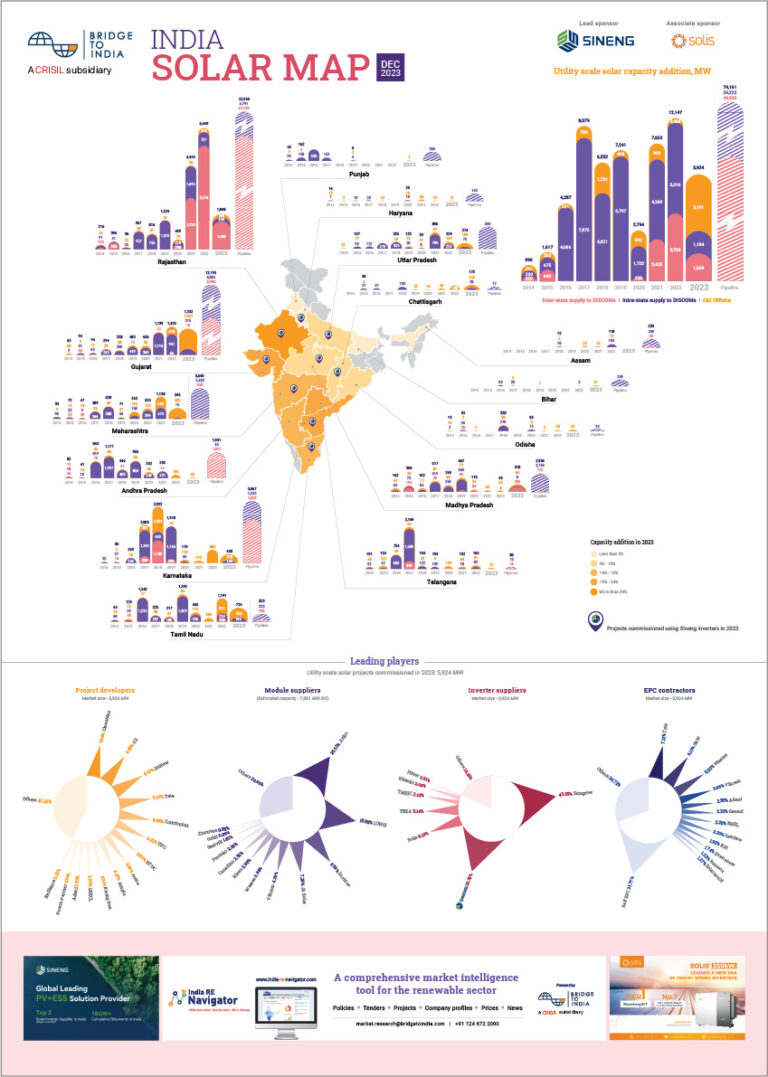Jasmeet Khurana, Market Intelligence Consultant at BRIDGE TO INDIA, works on project performance benchmarking, success factors for module sales, financing and bankability of projects in India.
Solar in India will, in the medium term, benefit mostly from the ongoing liberalisation and privatisation of the electricity market. In that respect, the state government of Bihar has just announced the process for the privatisation of power distribution in four towns (refer).
- Delhi and Mumbai were among the first cities to have privatized power distribution in the country
- In 2011-12, transmission and distribution (T&D) losses in the state stood at 39.2%
- In India, privatization of power distribution is usually associated with enhanced customer satisfaction levels due to improved service quality
According to the officials, the primary reason for this move is to minimize the heavy distribution and commercial losses being incurred by the existing state operated distribution companies. In 2011-12, transmission and distribution (T&D) losses in the state stood at 39.2% – an extremely high number and considerably above the already high country average (upwards of 20%). In India, privatization of power distribution is usually associated with enhanced customer satisfaction levels due to improved service quality. Most customers are willing to pay a higher price for power if the supply is more reliable as compared to subsidized but erratic power supply.
It is also hoped that the ongoing privatisation of power infrastructure will further new infrastructure initiatives relevant to the spread of solar power: grid stability, net-metering and smarter grids. The transition can, however, have an adverse impact on some existing power purchase agreements (PPAs). PPAs for sale of solar power within states are usually signed with local distribution companies. Although, there is no available precedent with regards to solar PPAs, it is possible that privatisation of a distribution company may result in renegotiation of a signed long-term PPA.
Delhi and Mumbai were among the first cities to have privatized power distribution in the country. Thereafter, multiple cities across Madhya Pradesh, Odisha and Gujarat have either privatized power distribution or are planning for it. Given that most Indian state level distribution companies are in financial distress, it is possible that power distribution in many Indian cities will be privatized moving forward.
This post is an excerpt from this week’s INDIA SOLAR WEEKLY MARKET UPDATE. Sign up to our mailing list to receive these updates every week.
You can view our archive of INDIA SOLAR WEEKLY MARKET UPDATES here.












